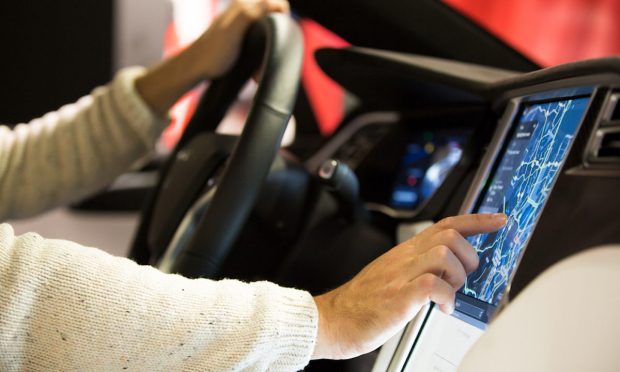Car OEMs Use Subscription Services to Boost Resale Value, Drive Personalization

With the Tuesday (Dec. 7) announcement of its software strategy through 2030, Stellantis followed other automakers in outlining plans that will transition them from being manufacturers of mechanical products that are sold once to also being suppliers of software that is sold on a recurring basis.
During a digital event dubbed Software Day, Stellantis executives said they expect software-enabled product offerings and subscriptions for connected vehicles to generate about €4 billion ($4.5 billion) in annual revenues by 2026 and €20 billion ($22.5 billion) by 2030.
Read more: Stellantis Targets $22.5B in New Software by 2030
“This new software business is at high relative margins, more in line with tech businesses’ margins than traditional automotive margins,” said Stellantis CEO Carlos Tavares. “And software will support cost savings and avoidance to make Stellantis an even more efficient company, and will give an increased value to our customers with higher customization, longer life and higher resale value.”
Disconnecting the Hardware and Software Cycle
The company considers a car to be monetizable for the first five years of its life, and 34 million monetizable connected cars will be capable of receiving those software products by 2030. A majority of all the company’s new vehicles are expected to be capable of receiving over-the-air (OTA) updates by 2024; like smartphones, they will be able to remain up-to-date and customizable for the owner — and profitable for Stellantis — for years after being built.
During Software Day, the Stellantis executives announced that cars’ software will be updated quarterly, the company’s captive finance arms will begin offering usage-based auto insurance, and a new car platform will include an eCommerce marketplace and payment services.
“Our strategy is to disconnect the hardware and software cycle to create a product that can evolve naturally and regularly,” Stellantis Chief Software Officer Yves Bonnefont said during the event. “This approach will make the vehicle always fresh, its value higher and our customers happier. And, of course, we want to own a broader scope of the software value chain.”
Powering Change With Over-the-Air Updates
The presentation follows similar announcements by General Motors and Ford. GM executives said in October that they expect software-enabled services to account for between $20 billion and $25 billion in revenue by 2030. That includes $6 billion from OnStar Insurance Services, a range of auto and home insurance policies that offers discounts to drivers of connected vehicles.
Read more: General Motors Says Over 25% of 2030 Revenue Will Come From Software and New Business
Ford, too, has big plans for developing and selling connected services. Executives said in October that they expect to scale the number of connected Ford and Lincoln vehicles on the road enabled for OTA software updates from about one million today to more than 33 million by 2028.
Also see: Ford Expects to Have 33M Vehicles Receiving Over-the-Air Software Updates by 2028
To enable Stellantis’ move to become a software provider, three new platforms are to be launched in 2024. These will be OTA-capable, allowing quick and convenient software updates for customers. They also will enable navigation, voice assistance, and eCommerce marketplace and payment services.
Offering Customers Software-Based Services
With the OTA capability, Stellantis plans to offer software updates at least quarterly by 2026. There will also be on-demand offerings; the executives said this will give customers the opportunity to tailor their vehicles to their needs and therefore strengthen their bond with the car and the brand.
“If the past was about increasing margins by moving customers north in hardware and trim levels, our future is about offering customers software-based services,” Mamatha Chamarthi, senior vice president, software business and product, said during Software Day. “Today, satellite radio subscriptions and connected navigation comprise the majority of our revenue in this category. We are already seeing a healthy conversion from free trials to paid subscriptions, and we expect a tenfold growth by 2030.”
The usage-based insurance program announced during Software Day will be launched in 2022 and offered through the captive finance arms in Europe and North America, and will later be expanded globally. The program will leverage the company’s capabilities to collect data from connected cars.
“Software will further magnify the DNA of our 14 iconic brands, creating a unique experience for each of our customers in the fastest and most cost-efficient way,” Tavares said. “Software will improve our business model, disconnecting hardware from the software cycle and shifting the center of gravity of our business toward Stellantis’ extended car park.”
